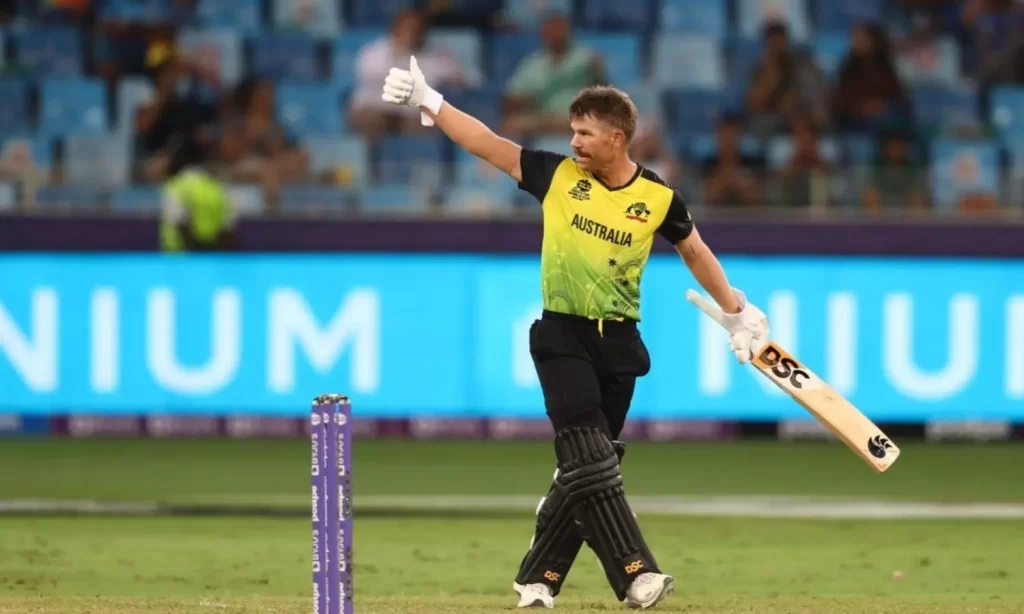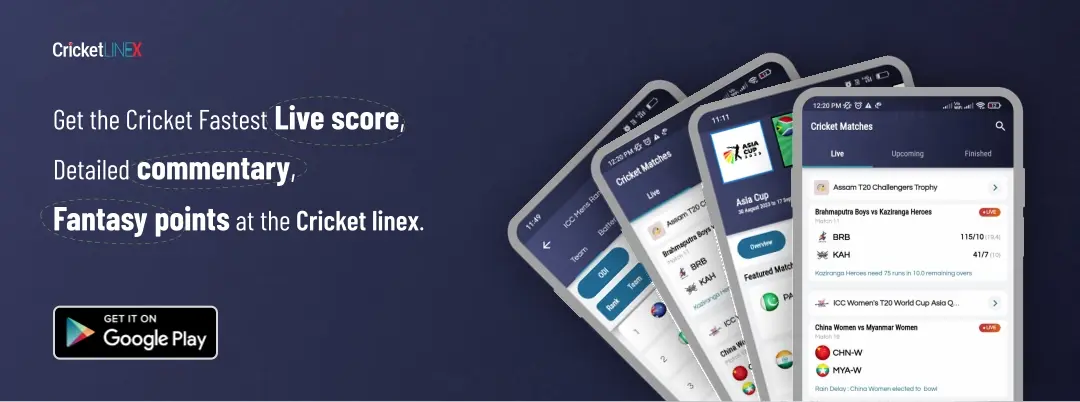List of Best ADC Champions in the League of Legends
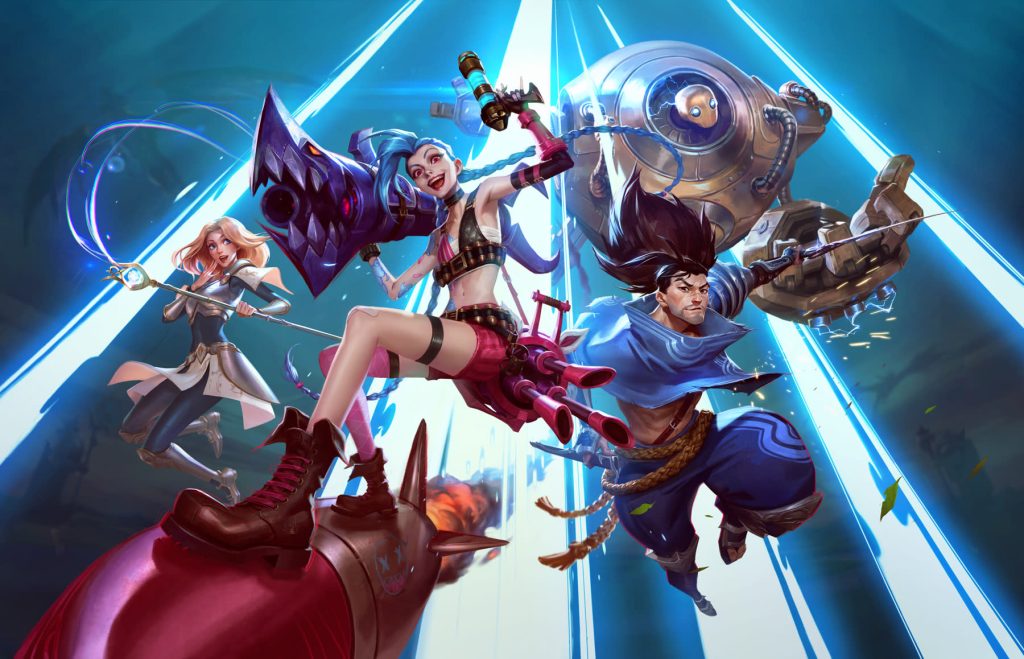

Is it true that certain champions in League of Legends are simply more powerful than others?
In the world of League’s marksmen and markswomen, there exist various categories of champions to select from. Some of these include attack-speed-oriented hyper carries like Tristana and Jinx, while others possess high early damage capabilities like Jhin and Draven. However, the current ADC meta in Patch 13.5 provides players with the freedom to pick any marksmen champion that they prefer since they are all reasonably viable at the moment.
The roster of high-performing champions can vary depending on various factors. Occasionally, the meta shifts without any clear cause other than player preferences, but frequently, changes to the balance are responsible for these shifts. Staying up-to-date on which champions are currently popular can be challenging, so allow us to do the work for you.
List of Best ADC Champions in LoL
There are currently Six Best ADC Champions in LoL, they are as follows:
1. Twitch
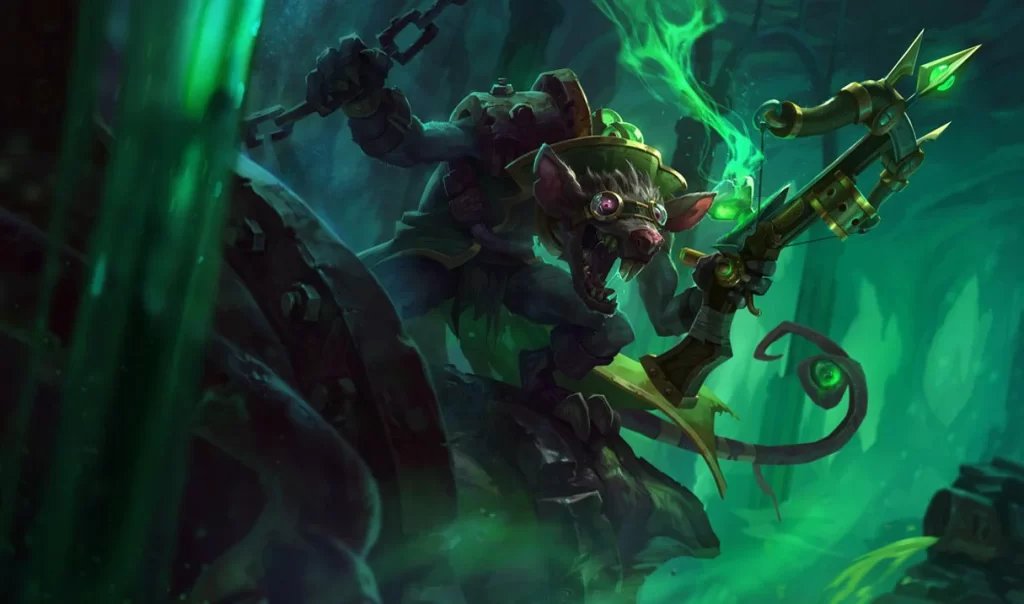
In the current ranked season of 2023, Twitch has been considered one of the most potent AD carries. Although Twitch only underwent minor modifications during the preseason, the slight meta-shift worked in his favor. With tanks and bruisers largely occupying the top and jungle positions, Twitch’s true damage is particularly effective against champions with high resistances.
Pros
This champion is considered to be one of the strongest late-game carries due to their abilities. With their ultimate, they can unleash long-range auto attacks, making them a formidable force in battles. Additionally, they have the ability to go invisible, allowing for unexpected flanking maneuvers.
Cons
Despite their late-game prowess, this champion has several weaknesses. They have a weak laning phase, meaning they may struggle early in the game. They are also relatively squishy, making them vulnerable to being taken down quickly if caught out of position. Furthermore, they lack mobility, making it challenging to escape from danger.
Item Build
Like most ADCs, Twitch’s primary source of damage comes from auto attacks. With the shift away from the AP build, Twitch now favors Lethal Tempo as his primary keystone rune, which grants a significant boost in attack speed for early-game skirmishes and team fights. For the other runes in the Precision tree, Presence of Mind is a solid choice, as it offers extra mana and allows Twitch to fight without worrying about running out of resources. Legend: An alacrity is also a good option, as it provides additional attack speed, and Coup de Grace is a strong rune that works well with Twitch’s ultimate, allowing him to shred through multiple targets.
Twitch’s secondary tree is currently Domination, with Taste of Blood providing extra sustain during his weak laning phase, and Treasure Hunter helping him to purchase his core items more quickly. In terms of items, Blade of the Ruined King is Twitch’s core item, providing a lifestyle to help him survive the early game. He then rushes Kraken Slayer, a Mythic item that provides a strong second-item power spike, allowing Twitch to dish out significant damage.
As a hyper-carry, Twitch becomes even stronger after acquiring three Legendary items. Runaan’s Hurricane is an excellent choice for Twitch, as it’s passive increases his overall DPS significantly. Lord Dominik’s Regard is an ideal item to use against tanks, as it grants armor penetration. Additionally, Infinity Edge is a great choice for Twitch, as it allows his critical hits to deal massive damage. Since Twitch is often played with enchanter support, he doesn’t necessarily require a defensive item. However, Guardian Angel is a solid choice for Twitch, as it provides a second life and can help him survive against incoming assassins or burst damage.
Ability Priority
When playing Twitch, you should prioritize leveling up his abilities in the order of R > E > Q > W. Contaminate (E) is Twitch’s primary trading tool, providing additional damage to his attacks. Ambush (Q) is usually used to reposition quickly or to initiate surprise attacks after exiting invisibility. It’s maxed second because of the increased attack speed bonus. Max Venom Cask (W) last, as it’s primarily used to apply slows and additional Deadly Venom stacks.
Game Plan
Although Twitch is one of the best ADCs in the late game, his early game is weaker compared to most other marksmen. Therefore, your main objective when playing Twitch is to survive the early game and keep up with your opponents on the farm. Missing a few CS isn’t a problem as long as the enemies don’t snowball out of control. Once you reach your power spikes, you’ll become the primary damage dealer on your team. Use Ambush (Q) to find the ideal position to unleash your auto-attacks empowered by your ultimate. If you can do that, you’ll win most of your team fights. Learning to perform quick attack-move animations is essential for maximizing your damage output while avoiding your opponents’ spells.
2. Draven

Draven is considered one of the most difficult champions to play in League of Legends, but his high skill cap is rewarded with a massive potential for damage output. With the recent ADC buffs and item changes, he has become a top-tier pick in the bot lane. In Patch 13.4, Draven has a 9% pick rate and a staggering 45% ban rate in platinum Elo and above, rising up to 73% in master and above. These numbers indicate how strong he currently is, and why he’s such a contested pick in high-level play.
Pros
Draven is known for his enormous damage output, especially when he catches and juggles his spinning axes correctly. His ultimate, “Whirling Death,” is a global ability that can deal significant damage to enemies both on the way to its destination and on its way back. Draven’s passive, “League of Draven,” also allows him to snowball harder than any other marksman if he can keep up his passive stacks, earning extra gold and adding extra damage to his basic attacks.
Cons
Draven is considered one of the most difficult ADCs to master due to his unique gameplay mechanics. Catching his spinning axes is essential to deal maximum damage, and requires a lot of practice and precision. Additionally, his kit lacks mobility, making him vulnerable to ganks and crowd control. Despite his enormous damage potential, Draven is also easy to shut down if he falls behind in the early game. His reliance on snowballing means that if he isn’t able to secure early kills and farm, he may struggle to catch up in the mid to late game.
Finally, Draven requires exceptional positioning due to his lack of mobility and vulnerability to crowd control. Positioning errors can easily result in getting caught out and killed, which can snowball the game against him and his team.
Item Build
Draven’s item build usually consists of a mix of damage and attack speed items, with some utility thrown in to ensure his safety during team fights. The first item he usually buys is the Blade of the Ruined King, which greatly enhances his attack speed and life steal, as well as providing a strong action that can be used to slow down enemy champions. After that, Draven typically goes for either the Bloodthirster or the Infinity Edge, depending on how well he’s doing in the game. The Bloodthirster provides additional life steal and damage, while the Infinity Edge enhances his critical strike chance and damage. Both items are strong choices for Draven and can greatly enhance his damage output.
Draven’s other core items include the Rapid Firecannon, which enhances his attack range and critical strike chance, and the Guardian Angel, which provides additional survivability in team fights. In addition to these items, Draven may also opt for defensive items like the Maw of Malmortius or the Mercurial Scimitar, depending on the enemy team’s composition.
Ability Priority
I would like to correct one thing you said. While Draven’s abilities are usually prioritized as R>Q>W>E, some players may choose to prioritize W over Q in certain situations. It’s true that Q is Draven’s main damage-dealing ability, but Blood Rush (W) can provide increased mobility and attack speed that can be very useful in certain team compositions or situations where kiting is important. It’s also worth noting that some players may choose to put a second point into Stand Aside (E) at level four, as it can provide additional crowd control in the lane and set up ganks or all-ins. Ultimately, ability prioritization can be situational and can vary from player to player.
Game Plan
That’s great advice! It’s important to remember that as Draven, you have a lot of potential for early-game dominance and snowballing, but you also need to be aware of your vulnerabilities. Playing around your strengths and weaknesses is key to success with Draven. Standing by your support or tank is crucial, especially in team fights where you can be easily targeted by enemy assassins or fighters. Using your ultimate, Whirling Death, as a finisher or poking tool can also be a game-changer in fights.
3. Jinx
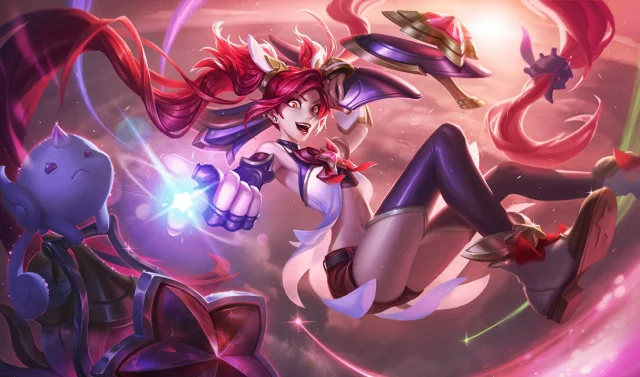
Jinx’s kit revolves around the use of her minigun and rockets. Her Q, Switcheroo!, allows her to switch between the two, with the minigun providing faster attacks on a single target and the rockets dealing splash damage. Her W, Zap!, is a long-range skill shot that slows the first enemy hit, while her E, Flame Chompers!, lays down a trap that roots and damages enemies who step on it. Finally, her ultimate, Super Mega Death Rocket!, fires a massive rocket that deals damage to all enemies in its path and deals bonus damage based on the missing health of its primary target.
Jinx’s strengths lie in her ability to deal massive damage from a safe distance, and she can quickly destroy towers and objectives with her minigun’s passive, which grants bonus attack speed on consecutive attacks. However, she lacks mobility and can be vulnerable to ganks and assassins. To maximize Jinx’s potential, players typically choose the Press the Attack keystone rune from the Precision tree. This rune provides bonus damage and amplifies all damage dealt to the target when attacking them repeatedly. Other viable options include Fleet Footwork for added sustain and Lethal Tempo for increased attack speed. In terms of secondary runes, players can choose between Inspiration and Domination. In the Inspiration tree, players can take Biscuit Delivery and Boots of Swiftness to sustain themselves in the lane and increase their mobility, respectively. In the Domination tree, players can opt for Taste of Blood and Ravenous Hunter for added sustain in team fights.
Pros
Jinx received a small buff in Patch 13.4, which increased the damage of her Flame Chompers (E) ability. Despite the small buff, Jinx remains one of the best DPS late-game champions in the game, thanks to her passive ability, which grants her a boost in attack speed and movement speed after a kill or assist. She can quickly clean up team fights with her long-range rockets and shreds through objectives with her minigun.
Jinx can also be a pleasure to play when fully mastered, as her kit offers a lot of options and decision-making opportunities. Players must carefully manage their two weapons, their passive ability, and their positioning to maximize their damage output while staying safe.
Cons
Jinx is an excellent late-game carry, but if she falls behind in the early game, she can be vulnerable to getting burst down by enemy champions who have built up an advantage. Other than this, Jinx has no built-in way to escape from crowd control effects such as stuns or roots, making her vulnerable to being locked down and killed.
Jinx is a marksman champion who deals a lot of damage from a distance, but she is also quite vulnerable to enemy champions who can get up close and personal with her. To stay alive and keep dealing with damage, Jinx needs her teammates to protect her with crowd control or by blocking incoming damage. And, Jinx has no natural dashes or blinks to help her reposition in fights, so she can struggle against champions who can quickly close the gap between them and her.
Also, Jinx’s abilities can be quite mana-intensive, so she can run into issues with running out of mana if she isn’t careful with her ability usage.
Item Build
For Jinx’s main rune tree, Precision is the best choice with Lethal Tempo, Presence of Mind, Legend: Bloodline, and Coup de Grace. This combination gives Jinx extra mana, life steal, and higher damage when killing low-health targets. Coup de Grace synergizes well with Jinx’s reset mechanic and attack speed boost, increasing her overall DPS. As for the secondary rune tree, Sorcery is the best choice with Absolute Focus and Gathering Storm. Absolute Focus increases Jinx’s initial damage at the start of a fight and boosts her poke damage with her W ability (as long as she has more than 70% health). Gathering Storm further boosts Jinx’s late-game power, adding more attack damage the longer the game lasts.
For Jinx’s item build, the traditional ADC crit damage build is recommended. The two core items are Kraken Slayer and Infinity Edge, followed by Rapid Firecannon or Phantom Dancer. The final two items should be chosen based on whether Jinx needs more offensive or defensive stats and can include Lord Dominik’s Regard, Bloodthirster, or Guardian Angel.
Ability Priority
Jinx’s abilities should be maxed in the order of R>Q>W>E. Switcheroo! (Q) is Jinx’s most important ability as it allows her to switch between her minigun and rocket launcher, giving her more damage output in team fights and skirmishes. (W) should be maxed second as it has been buffed in recent patches, making it a more valuable ability. By maxing Zap! (W) second, Jinx can take advantage of the increased slow, which can help her team secure kills or escape from danger.
Flame Chompers! (E) should be maxed last since it is mainly used for utility and crowd control. While it can be useful for setting up kills or disengaging from fights, it doesn’t provide as much damage output as Jinx’s other abilities.
Game Plan
Jinx’s DPS is heavily reliant on her items, and she becomes a hyper-carry once she has completed several full items. Her first big spike comes from purchasing Infinity Edge, which significantly increases her damage output. It’s important for Jinx players to prioritize farming and accumulating gold to hit their power spikes as soon as possible. While there may be opportunities to go for kills, it’s important not to be overly aggressive or greedy and risk putting yourself in a bad position. Instead, focus on playing safely and positioning yourself well in team fights.
Jinx players should also be aware of their target selection and prioritize taking down high-priority targets. Once Jinx secures a takedown, she can quickly snowball into a one-vs-nine carry, dealing massive amounts of damage to the enemy team. Overall, Jinx players should focus on playing safely and intelligently to reach their item spikes and dominate the game with their hyper-carry potential.
4. Jhin

With bully bot liners falling out of the meta, Jhin has risen in popularity once again as a strong ADC, especially in lower Elos. Jhin’s wave-clearing ability and low resource requirements make him one of the best marksmen at absorbing pressure in the current meta. In a meta where bot lanes are constantly looking for opportunities to initiate a snowball and gain an early advantage, Jhin’s ability to neutralize these plans and safely navigate the laning phase can be invaluable. His long-range abilities and crowd control also make him a strong pick in team fights, where he can deal significant damage from a safe distance and set up kills for his team.
Item Build
Jhin’s reload mechanic means that he doesn’t rely on attack speed, making Fleet Footwork the ideal rune choice for him. This rune provides additional healing and a movement speed bonus that allows Jhin to kite enemies and reposition quickly. The minor runes in the Precision tree that complement Jhin’s playstyle are Presence of Mind, Legend: Bloodline, and Coup de Grace. Since attack speed is not as important on Jhin, extra life steal is a better choice. As for the secondary rune tree, Sorcery is a good choice, with Nimbus Cloak and Celerity providing additional movement speed and improved kiting potential.
In terms of itemization, Jhin’s build includes Galeforce as the Mythic item and Infinity Edge as the second item, as these items provide Jhin with increased damage output compared to the previous build. Rapid Firecannon is a great third item as it increases Jhin’s auto-attack range, making it safer for him to deal damage. Bloodthirster is a good option for more sustain, while Lord Dominik’s Regards can be built to shred through enemies’ armor. Guardian Angel is the best defensive option with its revival passive, while Maw of Malmortius is situational and is used to counter magic damage sources.
Ability Priority
It’s worth noting that some Jhin players actually prefer to max Deadly Flourish (W) first for the increased root duration and higher damage output, especially if they’re looking for picks and skirmishes. However, maxing Dancing Grenade (Q) is still a safe and effective option for farming and pushing waves. Ultimately, the max order can vary based on personal playstyle and game circumstances.
Game Plan
In addition to positioning, it’s important to pay attention to your passive, Whisper. This passive gives Jhin bonus damage based on a percentage of his critical strike chance, which means that building critical strike items is crucial. It also means that you want to make sure you’re not wasting any critical strike chance by overlapping it.
When it comes to team fighting, Jhin’s ultimate, Curtain Call, can be a powerful tool if used correctly. It’s best used as a follow-up to an engagement or to pick off low-health targets, as it can be difficult to hit all four shots on full-health enemies who are aware of your presence. Make sure to aim carefully and try to predict the enemy’s movements to maximize the damage dealt. In general, Jhin is a champion that requires patience and good decision-making. Take advantage of his strong laning phase, keep a close eye on your positioning, and make the most of his kit to succeed on the Rift.
5. Xayah

Xayah is a unique ADC in that she relies heavily on her feathers to deal damage. Her core combo involves using her W, which grants attack speed and movement speed, followed by using her Q to shoot feathers in a line. After that, she can use her E to root enemies hit by the feathers and deal additional damage.
One of the most important aspects of playing Xayah is to properly position her feathers to maximize her damage output. During the landing phase, she can use her feathers to zone enemies away from minions and create opportunities for her support to engage. In team fights, she can use her ultimate, Featherstorm, to become invulnerable and reposition while also shooting out a flurry of feathers.
As for Xayah’s build, her core items include Galeforce, Navori Quickblade, and Infinity Edge. She can also opt for a defensive item like Guardian Angel or a life-steal item like Bloodthirster, depending on the game state. Xayah’s playstyle may take some time to get used to, but once mastered, she can be a formidable force in the bot lane and beyond.
Pros
The new build for Xayah with Navori Quicklblade as a second item provides an absurd mid-game spike, making her a strong pick in the current meta. Xayah also has a unique self-peeling ultimate in Featherstorm, which allows her to dodge incoming crowd control and reposition herself in team fights. This makes her a potent duelist and team fighter in the right hands.
However, Xayah’s kit can be a bit more challenging to master compared to other ADCs. She relies heavily on managing her feathers and using them in combination with her abilities to maximize damage output. It takes time and practice to get used to her mechanics, but the payoff can be huge.
Cons
Xayah can struggle in the early game due to her lack of range and wave clear, making it challenging to farm and trade effectively. Additionally, her kit is quite mechanically demanding, with feather placement and timing being crucial for maximizing her damage output. Overall, she is considered one of the hardest ADC champions to master, but in the right hands, she can be an unstoppable force on the Rift.
Item Build
It’s worth noting that Xayah’s build can be situational and may vary based on the game state. For example, if the enemy team has a lot of crowd control, Xayah may opt for a Mercurial Scimitar instead of a Phantom Dancer or Bloodthirster. Similarly, if the enemy team has multiple assassins, she may build a Death’s Dance to mitigate burst damage.
Xayah’s skill order is typically R>Q>E>W. Deadly Plumage (E) is maxed second as it synergizes well with Navori Quickblade, and the bonus damage from the feathers can be a significant source of damage in team fights. However, some players may choose to max Bladecaller (E) first if they are looking to poke and harass the enemy lancers. In the planning phase, Xayah’s kit provides her with strong wave clear, making it easy to push the wave and gain priority in the lane. She can use her feathers to poke the enemy laners and set up plays for her support. However, she is relatively weak in the early levels, so she needs to be careful not to get caught out by enemy junglers or all-ins from the enemy bot lane.
Xayah’s ultimate, Featherstorm (R), provides her with a lot of self-peel and can be used to dodge crucial enemy abilities. It’s crucial to save the ultimate for when you need it most, and not waste it on a low-priority threat. In team fights, Xayah should position herself in a safe spot and use her feathers to deal with damage while waiting for an opportunity to use her ultimate effectively.
Ability Priority
Xayah’s ability order can vary depending on the game situation. While some players prefer to max Bladecaller first for the increased damage and root duration, others may max Deadly Plumage first for the increased attack speed and wave clear potential. Maxing Q last is still the most common choice, though, as it provides less overall benefit compared to her other abilities.
Game Plan
It’s important to note that Xayah’s feathers can be used for both offensive and defensive purposes. For example, if an enemy champion is chasing you, you can use your Q to throw the feathers in their path, then use your E to root them in place and make a quick escape.
In team fights, it’s crucial to position well and use your ultimate (Featherstorm) effectively. This ability not only makes you untargetable for a brief period but also deals damage to nearby enemies when activated or deactivated. Use it to dodge key abilities, such as enemy ultimates, and to reposition yourself to unleash your damage onto priority targets.
Finally, communication with your support is essential when playing Xayah, as their abilities can help you set up your feathers and secure kills. Coordinate with them on when to engage, and use your feathers to follow up on their CC. With proper positioning and communication, Xayah can be a devastating force on the Rift.
6. Karthus

It’s true that Karthus has become more popular in the bot lane recently due to his strong scaling and ability to deal magic damage. However, it’s worth noting that he can be quite difficult to play effectively in the early game, and requires good positioning and decision-making in team fights due to his lack of mobility.
Karthus typically builds a mix of mana, ability power, and magic penetration items. For runes, he usually takes Dark Harvest as his keystone rune, along with Taste of Blood, Eyeball Collection, and Ravenous Hunter in the Domination tree. In the secondary tree, he can go for either Sorcery or Inspiration runes, with options like Manaflow Band, Transcendence, Cosmic Insight, and Biscuit Delivery. In terms of ability order, Karthus players generally max out their Lay Waste (Q) first, followed by their Wall of Pain (W), and then their Defile (E). His ultimate, Requiem (R), should be leveled up whenever possible.
As a Karthus player, it’s important to prioritize farming and staying safe in the early game, as he can be vulnerable to ganks and all-ins from enemy bot laners. Once he has a few items under his belt, he becomes a potent force in team fights, able to deal massive amounts of AoE damage with his abilities and ultimate. His passive ability, Death Defied, can also allow him to continue fighting even after he’s been taken down, so long as he has mana and can land his Lay Waste ability.
Pros
The secret bot lane pick is none other than Syndra, the Dark Sovereign. While she is traditionally played in the mid-lane, she is an incredibly strong pick for bot lane as well. Syndra is one of the best scaling mages in the game, and her high base damage allows her to deal incredible damage early on as well.
Syndra’s main advantage as a bot laner is her ability to bully the enemy marksman and support with her long-range abilities. Her Q can be used to harass from a distance, and her W can be used to pick up minions or throw enemy champions into her team’s grasp. Her E is also incredibly useful for zoning enemies away from her and setting up ganks. In terms of itemization, Syndra typically builds Luden’s Tempest and Rabadon’s Deathcap for maximum damage output. Zhonya’s Hourglass is a good defensive option if she needs it, and Morellonomicon is a good choice for its anti-healing effect.
For runes, Syndra typically takes Electrocute as her keystone, along with Manaflow Band, Absolute Focus, and Scorch. For secondary runes, she often takes Presence of Mind and Coup de Grace. However, her runes can be adjusted based on the matchup and playstyle.
Cons
Karthus is highly immobile and lacks any reliable escape tools, which makes him vulnerable to ganks and dives. Additionally, he requires precise timing and positioning to maximize his damage output, which can be difficult to master. Lastly, due to the nature of his ultimate, he requires coordination with his team to set up and execute plays effectively.
Item Build
It’s worth noting that some Karthus players opt for a different keystone rune, such as Conqueror or Comet, depending on their playstyle and the matchup. Conqueror provides more sustained damage and tackiness in extended fights, while Comet offers extra poke damage and better wave clear. However, Dark Harvest remains the most popular choice for Karthus in bot lane. Additionally, some Karthus players may choose to build Archangel’s Staff instead of Liandry’s Anguish for more mana sustain and a bigger mana pool to spam their abilities.
Ability Priority
Prioritizing Q and E is crucial for Karthus’ damage output and mana management while maxing Wall of Pain (W) last is acceptable as its main purpose is to provide utility and crowd control rather than raw damage.
Game Plan
Keep in mind that Karthus is a highly immobile champion, so positioning is crucial to avoid getting caught out by the enemy team. Try to stay back and let your team engage first, then follow up with your damage. Also, communication with your team is key, as you will need their help to protect you from enemy divers and assassins.
In the planning phase, try to take advantage of your range advantage and harass the enemy with your Q. If they try to engage you, use your Wall of Pain to slow them down and land more Qs. Remember that your passive, Death Defied, allows you to continue dealing damage after dying, so try to position yourself in a good spot before dying to maximize your damage output.
READ MORE: 5 Underpowered Elden Ring Builds That Are Fun to Play





